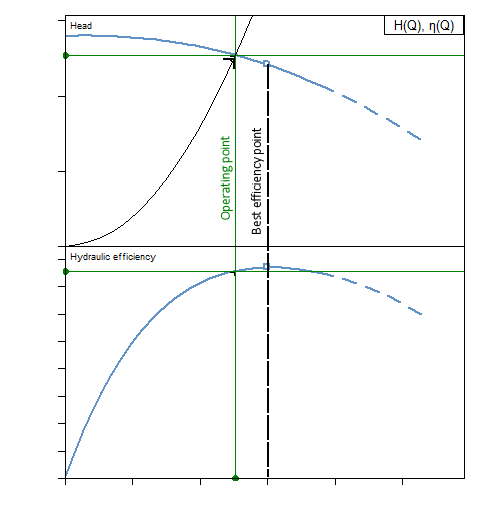
It is highly recommended to always select the smaller pump if the specified system duty point is between two possible pump curves. The resulting capacity reduction has, in heating systems, no appreciable effect on the effective heating performance. The positive effects are lower noise levels, lower investment costs and improved economy. For heating installations it is customary to undersize pump capacities up to 10% below the specified duty.
To avoid Cavitation (vapour formation within the pump) it is necessary to maintain at the pump suction port an adequately high positive pressure (static head) in relation to the vapour pressure of the fluid being handled. The minimum required inlet heads for Glandless pumps are generally listed in pressure charts. Glanded pumps require calculations in accordance with the NPSH information.

It indicates the values of Flow Q and Head H which will be obtained at stationary operation with the respective speed-related pump H-Q curve.
The specified duty point is defined to be that point on the system H-Q curve for which a pump is to be selected in line with the calculated hydraulic design criteria. The objective of the selection is (apart from other criteria, such as maximum efficiency) to minimise the deviation between the specified duty point and the actual operating point.
The operating point is always located at the intersection of pump H-Q curve and the actual system H-Q curve. At constant speed it moves up the pump H-Q curve with increasing friction losses towards a lower flow rate. The duty point should be chosen as close as possible to the best efficiency point.
This point is called the best efficiency point (BEP) of the pump. The position of the point changes if the hydraulic parameters of the pump, such as the impeller diameter or the speed resp. the viscosity of the pumped liquid, change.
The aim of an optimal pump selection is for the pump to operate at the BEP so that it achieves its maximum efficiency.


